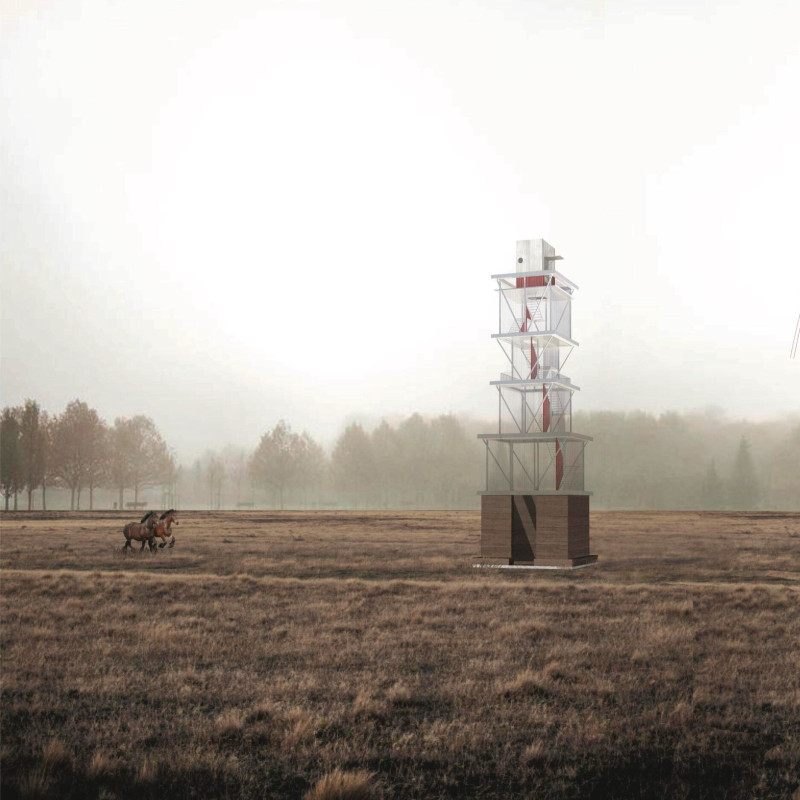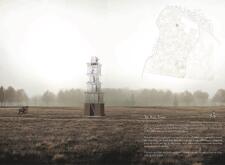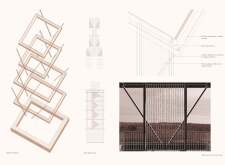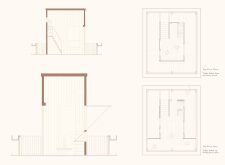5 key facts about this project
The Rain Tower is an architectural installation designed to intertwine seamlessly with its natural surroundings while serving practical functions on a working farm. The design emphasizes sustainability, interaction with nature, and community engagement, exploring how functional architecture can also foster connections between users and their environment.
The primary function of the Rain Tower is to serve as an observation and gathering space that encourages users to engage with their surroundings, particularly during rainfall. The structure's innovative water management system ensures that rainwater is collected and utilized, demonstrating a commitment to environmentally responsible design. The tower's multi-tiered levels allow for diverse activities, enhancing user experience while showcasing the surrounding landscape.
Sustainable Design Features
A key differentiator of the Rain Tower is its integration of sustainable and innovative design elements. The use of rammed earth walls provides both aesthetic appeal and thermal mass, stabilizing indoor temperatures while connecting the building to its earthy context. The galvanized steel structure offers durability and supports the tower's vertical orientation while staying visually understated. The incorporation of a sophisticated gutter system captures rainwater at every level, channeling it effectively for agricultural use on the farm. This design feature not only reduces water waste but also engages users by fostering a greater awareness of natural water cycles.
Adaptive Spatial Configurations
The arrangement of spaces within the Rain Tower exemplifies adaptability. Ground-level entry facilitates movement into the structure, leading to a sequence of functional areas that transition seamlessly from one to another. Each upper level serves a specific purpose, such as observation or social gatherings, while remaining flexible enough to cater to various activities. The inclusion of foldable tables and sliding doors reflects a thoughtful approach to space utilization, allowing the tower to transform based on user needs and environmental conditions.
Overall, the Rain Tower stands as an architectural project that effectively combines practicality with ecological awareness. Its commitment to sustainability, attention to detail, and innovative spatial configurations make it a notable example of how architecture can respond to both human needs and natural systems. To gain deeper insights into the architectural plans, sections, designs, and ideas behind the Rain Tower, explore the project presentation further.


























